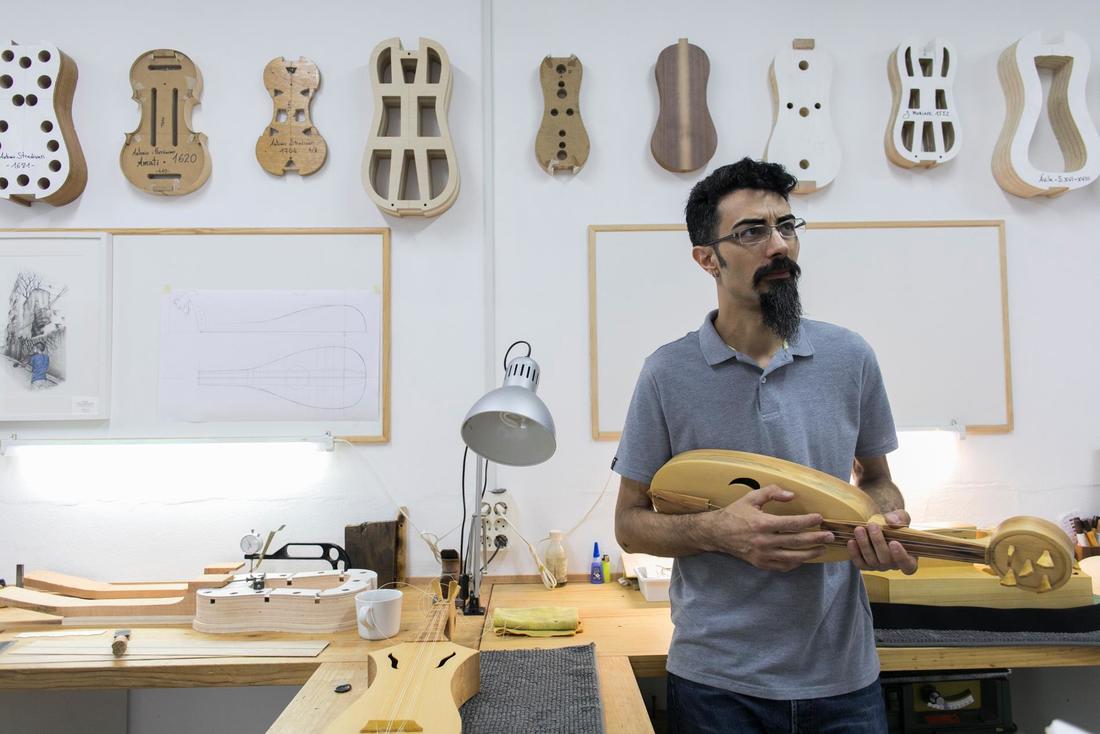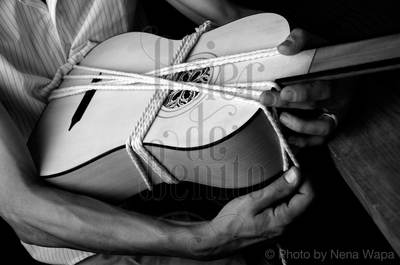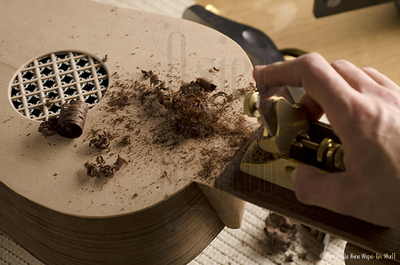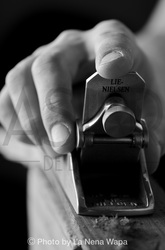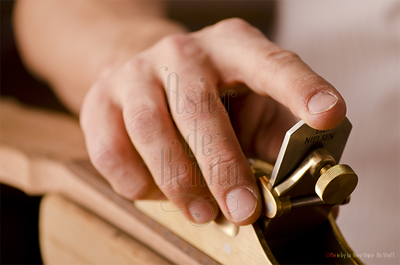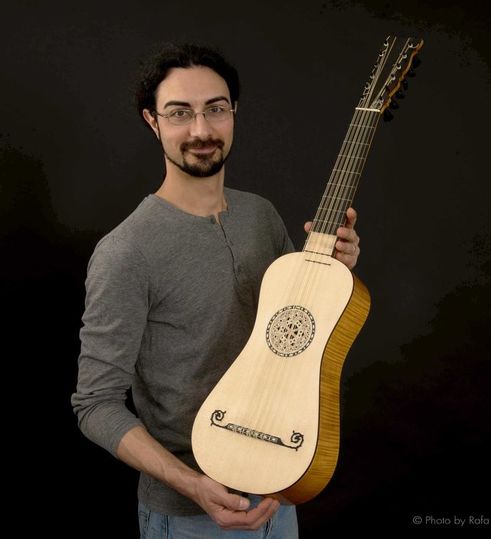Asier de Benito, instrument maker
Guided by my passion since I was a child for crafts and music, I began to build instruments in a self-taught way in my youth. Some time later I entered the "J. C. de Arriaga" Conservatory in Bilbao to study Artisanal Construction of bowed musical instruments. I studied traditional lutherie with Javier Guraya, and musical acoustics with the physicists Jesús Alonso and Unai Igartua. Also construction of modern and historical bows with archetiers Frèdèric Bécker and André Alegre, respectively. I was also a student in several historical instrument construction courses taught by master Jesús Reolid.
Now I work in my workshop in Bétera and I dedicate myself to organological research, the reproduction of historical instruments and the restoration of original instruments.
Now I work in my workshop in Bétera and I dedicate myself to organological research, the reproduction of historical instruments and the restoration of original instruments.
THE WORKSHOP
|
Wood
I use selected and properly seasoned wood. This means that, after the acquisition, wood planks are stored to dry naturally in the air without artificial heating which can change its properties. Every piece of every instrument I build is carefully studied before choosing what kind of wood using and how to cut it (grain running, rings disposition, etc ...). I also always choose historical criteria such as commercial inventories to know what species were traded in each period and which were used to build instruments. Again, the study of instruments preserved in museums give us very valuable information in this regard. So, to make the body, I use mainly European woods such as cypress, maple, birch, pear, walnut, cherry, linden... but also other from America, Africa or Asia, like Rosewood or Pau Ferro. For soundboards I use almost exclusively European Spruce (Picea abies), because it has the best characteristics between all species. In the case of items subject to increased wear or mechanical stress, such as pegs, fingerboards, nut, tailpiece, or buttons, it becomes necessary to use highly resistant materials such as ebony, boxwood, pear... and even bone or horn. Due to the over-harvesting and industrial production, some materials such as ivory, tortoiseshell, and some species of tropical timber are near of extinction and its trade is now prohibited. In these cases I use substitutes that match similar aesthetic and/or acoustic role. It is the duty of everyone to do and demand fair trade and use these materials with respect to the enjoyment of generations to come. Glue
I use animal glue of high quality and purity, obtained from tendons, bones or skin. Each has different properties and I try to use them accordingly. It is diluted in distilled water bath not over 65º C, so as not to spoil the collagen. However, I also use some modern synthetic resins for gluing thin joints, because they give high strength and an acceptable acoustical response. I build my instruments using techniques and procedures which follow the traditional art of lutherie. |
I'm always researching in new models and designs, to fit the player's needs. Finishes The purpose of finishing is to seal the surface of the instrument against moisture and wearing caused by use while highlighting the wood color and grain. I use organic compounds made by dissolving natural resins in alcohol or boiled linseed oil. An example is the shellac that is used in traditional guitar making and which is applied in thin layers with a pad (French polish). Also in this area I try to respect the historical criteria, for example, for medieval instruments I find much more coherent to apply beeswax or oil finish, giving a more natural looking to the pieces. |

